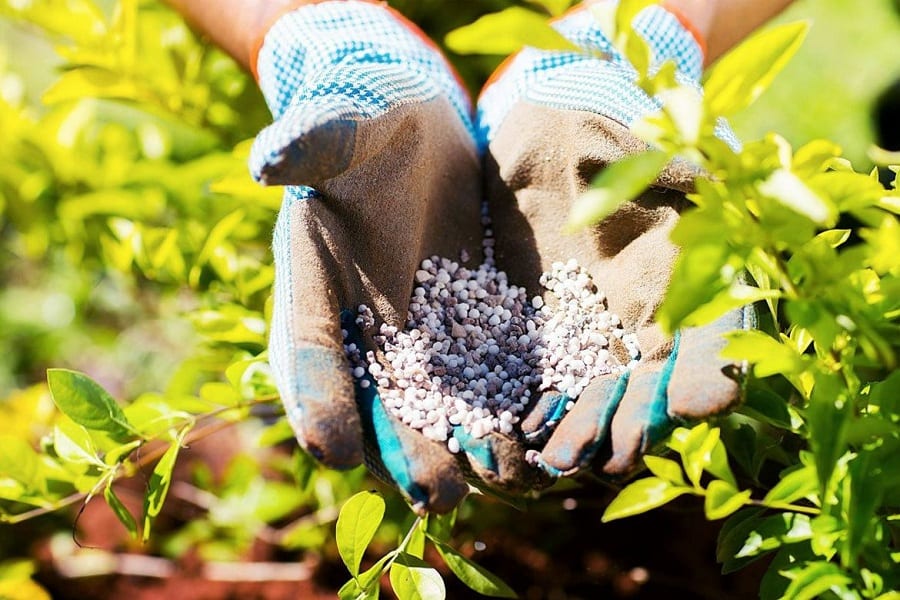Growing a plant looks easy enough from the outside when it seems at first that sunlight and water are all they need to thrive.
Like humans though, plants need more than just sun and hydration to survive, with the other important element of nutrients needing to be addressed for their success.
Fertilization is the process that allows plants to absorb nutrients as they can’t get everything they need from the soil, water, and sun alone.
Whether you have just one potted plant or a full, blooming garden, you’ll need to make fertilizer a part of your regular gardening routine, and the sooner you start, the better.
Why is fertilizer so important for plants?
Fertilizer is a mixture of nutrients that are fed to plants, just like food for humans, and they feature a specific combination of chemical elements including nitrogen, phosphorus, and potassium.
Fertilizer products come in many types and to suit the soil, plants, and conditions that they’re growing in, so choosing the right one can be overwhelming.
If you’re new to gardening and you want to know more about why fertilization in plants matters, this is the guide for you.
We cover all of the basics about fertilizer, why your garden needs it, the different types, and how to apply it for the best results, so you’ll give your precious plants everything they need to thrive and not just survive.
Table of Contents
What Is Fertilization?

Fertilizer is one of the less exciting parts of gardening but an essential one nonetheless.
A good fertilizer will act as the source of nutrients for your plants, and without a regular schedule of fertilizer, your plants won’t be as healthy or grow as large as they could be.
Fertilizer can be applied in a few different methods, and again it depends on what the plant and gardener require.
You can spray on a fertilizer each week, add pellets to the soil that are slow release and long-lasting, or mix through homemade compost every now and then to feed organic matter back through the earth.
All fertilizer products are different and they contain unique chemical elements that make them up.
The three most common parts of fertilizer are phosphorous, nitrogen, and potassium, with each offering something different:
- Phosphorous: Phosphorous is a nutrient used in plant photosynthesis and helps with the production of oils, starches, and sugars in the plant and roots. Without phosphorus, a plant won’t be able to grow properly and will be more prone to disease.
- Nitrogen: Nitrogen is found in every plant cell and with the right amount, your plant will grow and reproduce as needed. Without enough nitrogen, you’ll notice yellow leaves and stunted foliage in a plant. There are organic and inorganic sources of nitrogen in fertilizers with organic being the preferred option.
- Potassium: This essential nutrient aids with photosynthesis and is needed for the plant’s health. Without potassium, leaves will be dry, spots will develop, and the plant will be unable to regulate its water use.
Why Do Plants Need To Be Fertilized?
Plants can easily survive in the wild without being fertilized by a gardener, so it might be hard to understand why you have to add fertilizer to your potted plants or garden beds at home.
The main reason for this is that plants we keep at home won’t have access to the nutrients that are present in the soil in nature, nor do they have the ability to absorb the same type of air.
The soil that a plant lives in differs greatly and so it’s crucial to choose a fertilizer that matches the plant.
You’ll need to consider things like traffic, farming, and land use to see what’s required from a fertilizer, as well as the fact that the good nutrients the soil holds naturally will have been washed away with regular watering and digging.
Therefore, any plant in our care needs to be fertilized, allowing the soil to be replenished with these nutrients and helping the plant grow.
No matter the size of your garden or whether you just have a few household plants in pots, you’ll be doing the best thing for your greenery by investing in a good fertilizer and putting a schedule in place.
What Types of Fertilizers Are There?
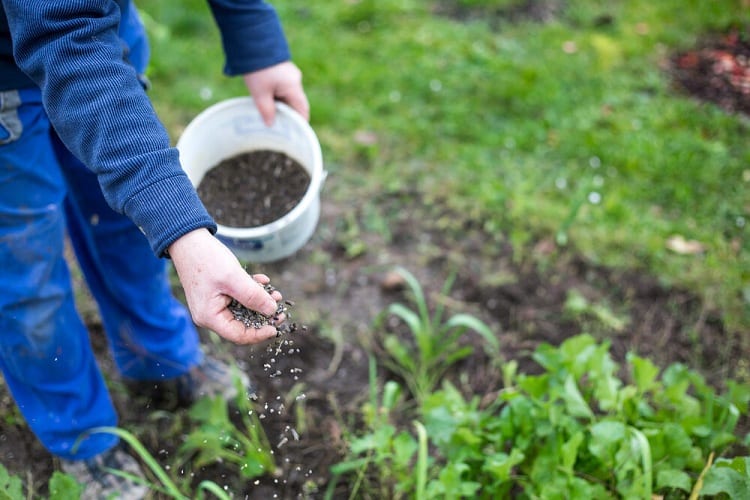
The type of fertilizer you use will have a great impact on your plants but just one look at what’s available is enough to overwhelm anyone.
Serious gardeners use a combination of fertilizers throughout the year, and those with more basic needs might have an all-purpose fertilizer, so there’s no hard and fast rule for everyone.
These are the most common types to consider and what they offer your plants:
Slow-release fertilizer
Gradual release fertilizers are better for steady growth but not for plants that need quick growth. They come in either granule or liquid format and it can take a while to build up their effectiveness.
The granules are coated with a special material that lets them slowly release their nutrients into the soil and can last for up to nine months.
Quick-release fertilizer
If you need quick results or have plants that require it, you can choose a quick release fertilizer, usually in a liquid format.
They have the added bonus of being cheap but require more frequent application, so it depends on what the gardener needs.
Granular fertilizer
A granular fertilizer product will come as a hard pellet or granule that you spread onto the soil.
This dry fertilizer type is better suited to large areas as they can be spread quickly and they have the option of being either slow or quick release, depending on your need.
Over time and with the help of regular watering they break down and spread nutrients into the soil.
Liquid fertilizer
Liquid fertilizer can be applied in a spray bottle or mixed with water and fed to your plants, and sometimes comes as a water-soluble powder.
These fertilizers have a lot of macronutrients but can be easily washed out when using drainage layers like sand, so they may need to be applied more frequently. Sometimes, you spray the fertilizer onto leaves directly and others will be sprayed in the soil at the base of the plant.
Organic fertilizer
An organic fertilizer might include things like compost which are slow-release in nitrogen, and made with ingredients like bonemeal and blood meal.
They also provide a boost of other micronutrients and encourage earthworms and microbes into the soil.
Organic products usually cost the most of all fertilizers but only need a small amount to work but not might be as effective during winter.
Choosing a Fertilizer
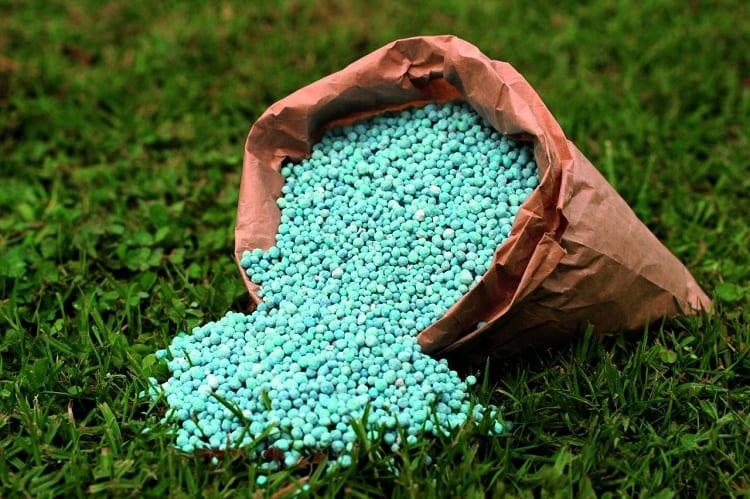
A fertilizer product will usually come with a detailed rundown of the chemical elements found within it and a list of ingredients.
It’s up to the gardener to match these numbers to what’s required by their soil, so you should learn what each of them means and how to read the labels on fertilizer products.
The fertilizer formula can be found on the package and will allocate a number to each of the chemical elements.
Nitrogen (N), phosphorous (P), and potassium (K) will have a percentage next to them that shows how much is in the product.
For example, one reading 10-8-4 has 10 percent nitrogen, eight percent phosphorous, and four percent potassium, as well as other ingredients.
If you’re unsure what your plants or garden needs, you can perform a soil test for a better understanding.
These tests can be ordered online or at gardening stores and allow you to check things like pH levels, nutrient deficiencies, excess nutrients, and more.
With the results, you’ll be better equipped to choose a fertilizer that can meet the soil’s unique needs.
The Best Way to Fertilize Plants
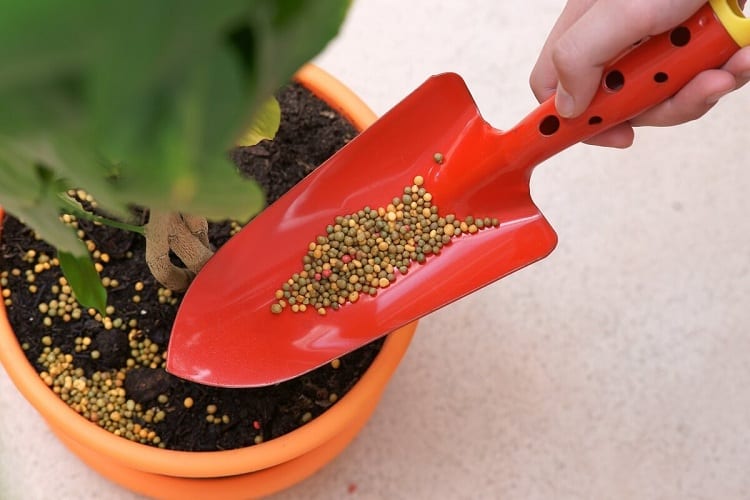
The best approach to fertilization is to follow the instructions directed by the manufacturer of the product you’re using.
These products can vary dramatically in strength, content, and application process, so you want to make sure you’re doing it right.
Most people assume that with fertilizer, the more you apply the better, but this isn’t a good idea.
You can overfeed plants with these products which lead to damage and sometimes death, so it’s imperative to follow the instructions and dosage strictly.
The best method for applying fertilizer will depend on the gardener and the plants they’re working with.
You might prefer something easier like a spray that can be applied to the base of the plant, whereas others like the pellet approach. It’s up to the gardener and their schedule, as well as what’s growing in their garden.
It’s important to keep a note of what fertilizer you’ve used, how much you applied, and the date that you did it.
This will ensure you never overfeed your plants or underfeed them and will allow you to track what each of your plants has received, especially if each of them has different needs.
Tips for Fertilizing Plants
Although it seems like there’s a lot to learn, you can keep your plants happy with just a few tips on fertilization.
Keep these in mind when you’re coming up with a plan for feeding your garden:
- Spring is when plants do most of their growing and this is the ideal time to apply fertilizer.
- If you’re unsure about how much to apply, it’s always better to do less than recommended rather than more, so that you don’t harm your plants.
- Look for a fertilizer that features micronutrients and macronutrients as both are just as important as the other.
- Don’t add fertilizer to any plant that’s out in the sun as the combination of sunlight with these chemicals will burn and potentially kill the plant.
- Always wear gloves when applying fertilizer and working with soil and read the instructions carefully to see what else is recommended.
Fertilization for Happy and Healthy Plants
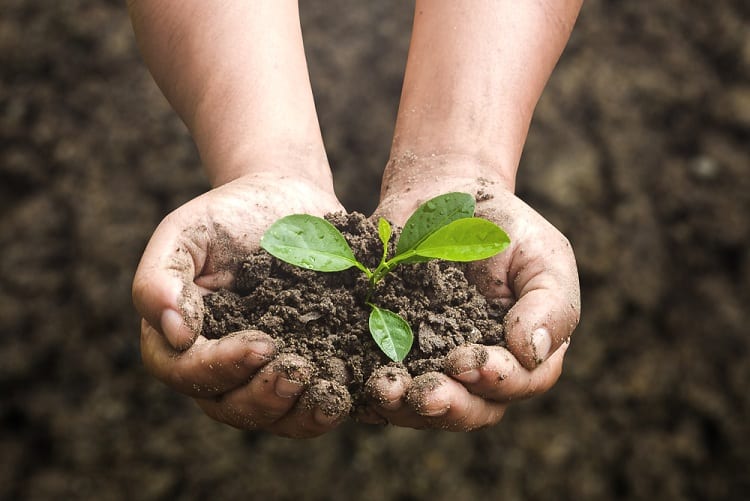
A thriving and happy plant is one with its basic needs being met, which includes a regular boost of nutrients that come from fertilizers.
Regardless of the type of fertilizer you choose or the schedule you work on, it’s an essential part of plant ownership that you must afford your green friends.
Just as humans wouldn’t get very far without food and nutrients, nor will your plants, and although they might stay alive they won’t be in the best condition.
With a basic fertilization routine, your plants will get access to all of the chemical elements they need to thrive, and you’ll feel peace of mind that you’re doing everything you can to help them flourish.
Related Questions
Owning a plant or tending a garden comes with a lot of responsibility but with the basics of water, sunlight, and fertilizer covered, your job will be much easier.
If you want to learn more about what makes your plants happy, read on to see the answers to some commonly asked questions about gardening.
The more light a plant is exposed to the better it will grow, but for some plants, too much sun can cause them damage.
Research the type of plant you have and determine its shade and sun hours per day to give it the best chance for success and keep in mind that some plants thrive in the shade compared to others who need full sunlight all day.
If you’d rather make a natural fertilizer at home some products can give the soil a boost of nutrients.
Compost, manure, eggshells, coffee grounds, aquarium water, and cooking water are all helpful for plants and soil, although you still may need to supplement with a store-bought fertilizer at times.
Recourses:

